Colliders in Ultra Engine
Attention: The addition of our custom model file format has changed the way this system works. Colliders are now saved into the Ultra MDL file.
I haven't been blogging much because I am making so much progress that there would be too much to cover. In this article I will talk about one little system I spent the last week on and show the improvements I have made to the workflow over Leadwerks.
In the asset editor, when the root of a model is selected, a "Collider" field appears in the physics properties. You can use this to quickly calculate and apply a collider to the model.
The convex hull collider includes an option for tolerance. You can adjust this to get a more or less precise convex hull around the model:
There is also an "optimize" option for the mesh collider. When this is activated it will attempt to merge adjacent coplanar polygons into a single face, and can result in fewer seams on colliding faces.
Two new shapes are included, the capsule and the chamfer cylinder, so now all the shapes supported by Newton Dynamics are available. (The chamfer cylinder is good for vehicle tires.)
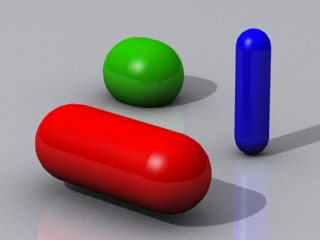
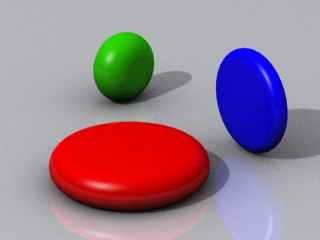
Unlike Leadwerks, you no longer need to specify the axis cylindrical shapes are oriented around. The editor will calculate which bounding box axes are most like each other, and use the third axis to orient the shape. This works for long skinny objects:
And it also works for short fat objects:
It will even detect which direction a cone should be facing, by calculating the total distance from the shape the model vertices are with each direction, and selecting the orientation with the smallest error value. (A single cone is probably not the best choice of shape for this model, but the point is that it correctly guesses which direction the cone should point based on the model vertices.)
For more advanced geometry, the convex decomposition tool is available in the Utilities panel. This exposes all the parameters available in V-HACD 4.0 and processes the task on a separate thread so you can continue to use the editor as the task runs in the background. It usually only takes a few seconds to compete, but it is nice to not have your workflow interrupted:
You can export colliders as model files, so it's also possible to just use this to generate convex hulls and export them to .obj. (I could get a better fitting shape if I spent more time adjusting the settings, but I just quickly made this shape with very low settings in order to get this screenshot.)
The new .collider file format, like everything else in Ultra, is JSON-based. Simple shapes can be stored in pure ASCII text, so they can be edited by hand if needed:
{ "collider": { "parts": [ { "offset": [ 0.0024815797805786133, -0.18715500831604004, -1.055002212524414e-05 ], "rotation": [ 0.0, 0.0, 0.0 ], "shape": "BOX", "size": [ 1.8899539709091187, 2.0, 1.8019688129425049 ] } ] } }
More complex shapes like convex hulls and meshes use binary data appended to the end of the file to store their contents, so that they load quickly in the engine:
{ "collider": { "parts": [ { "data": 0, "shape": "CONVEXHULL", "vertices": 61 } ] } }�n�2��<�5�j�k��#�I3��ch�������=b[��I<��~d�I�D�` �[�\{4���A���?XO3���>��վ�v!���f��� ?]����I�!�����V� >�?���mdG�t9�a��@���X?W��0o��e�-�D��h�P?>����>�����@��=T�U?��ž�{����w�� ���G��3��ޑ?>V?c�����;���6�s�/?&�=����?q�e?j��N���[#b��bݽ(��>��Ǿ�ڽ�E��MV�ַؽ��8<�G������D?BYT?I���@"N?6?�";-�$?��콜�";��t>8�"�t�";�z��3�0���";����ݐ�)�%=}P?��0?���=/�E?BYT?'>�=�E��MV����={; ?"����>�־��c� �>��?q�e?�$>�ӽ��P��@>��,?�j|=�2�>[o/���P�C��>��?>V?Z�>�������Қ�>��h���@�>��E�CO2��.�>T��[A�y]�>L��=T�U?w4�>���>�쾛?#o��e�-�r?�����U?�"?.�v>��!?�R?�zv����>�@?(�0�S �>.(?�n_�C�?�|-?d�[��}?��4?��>��վ��6?2M4��*?�>?P��=_�s��F?V ���ྲAm?�#�I3�Lr?�����
Leadwerks .phy collider files can also be loaded.
Notice in the shots above, in the drop-down menu there is also a "Browse" option, so you can create a collider file with a low-resolution model and then load the resulting collider to use with a high-resolution model.
I think this design strikes the right balance to let you do simple things quickly, but still allow for more advanced options when you need them. In the future I would like to add an additional in-depth collider editing utility that would allow you to select each sub-object, select model polygons and generate shapes just from those polys, and other advanced features.
The pick mode feature has been revised. The original design was based on Blitz3D, which did not support collision primitives at all. Instead of specifying a sphere or other shape for picking, you can now just tell the entity to use the collider for picking. (PICK_SPHERE is removed.)
On an unrelated note, I had to adjust the camera range based on the distance from the model being viewed, in order to make very small objects visible. This allows extreme close-up shots like in the blog header image that you probably aren't used to seeing except in VR. It's kind of interesting.
-
 1
1
-
 1
1






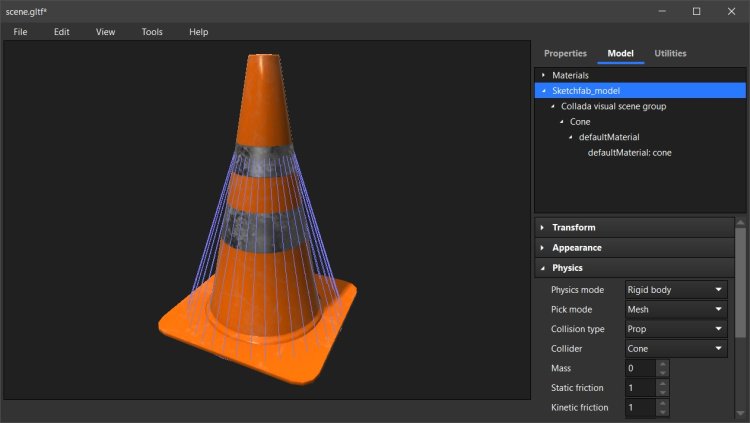
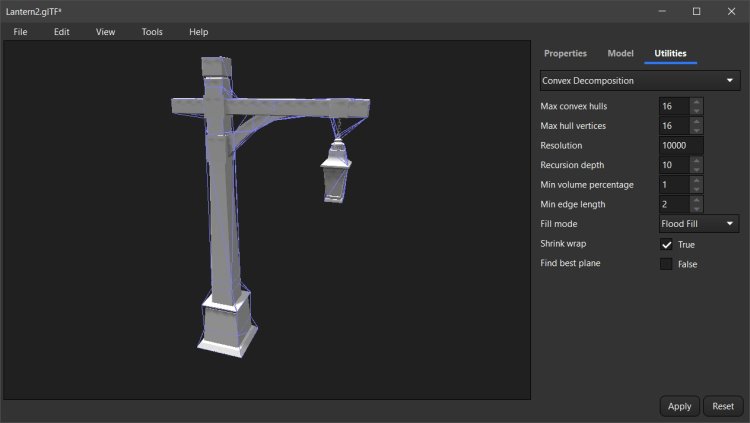
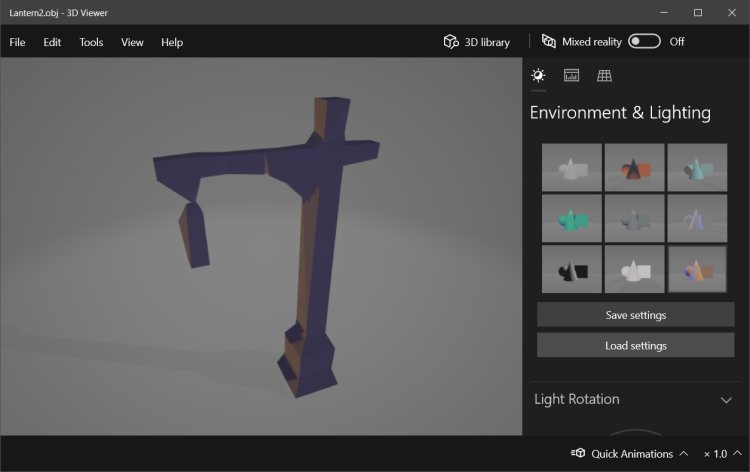


12 Comments
Recommended Comments